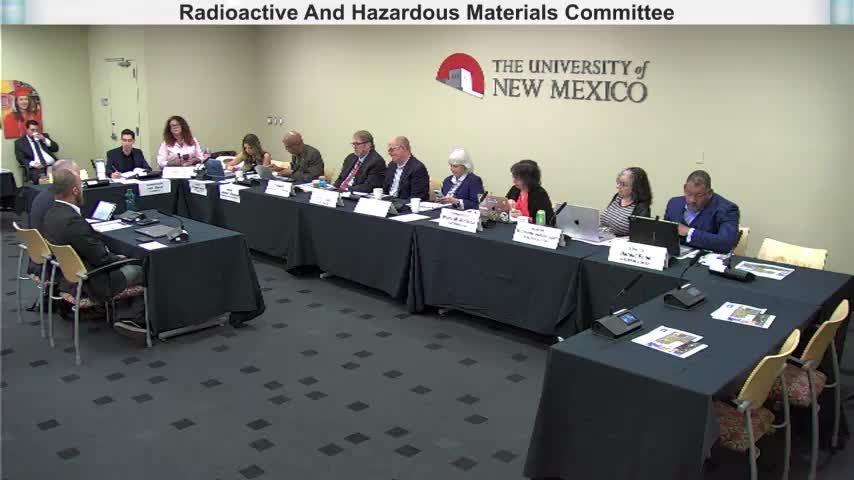New Mexico Launches Survey on PFAS Exposure at Holloman Air Force Base
September 02, 2025 | Radioactive & Hazardous Materials, Interim, Committees, Legislative, New Mexico
This article was created by AI summarizing key points discussed. AI makes mistakes, so for full details and context, please refer to the video of the full meeting. Please report any errors so we can fix them. Report an error »

In a recent meeting of the Radioactive and Hazardous Materials Committee in New Mexico, significant discussions centered around the health risks associated with PFAS (per- and polyfluoroalkyl substances) contamination, particularly at Holloman Air Force Base. The committee highlighted the need for a community-focused health assessment to gauge the impact of PFAS on residents who may have recreated at Lake Holloman, which has been identified as one of the most contaminated sites in the world.
The proposed assessment, estimated to cost around $50,000, will utilize a survey-based approach rather than traditional blood sampling. This method aims to gather information from individuals who have visited the lake, asking them about their recreational activities and potential exposure to PFAS. The committee emphasized the importance of reaching out to both local and national communities to ensure that anyone who may have been affected is informed about the risks associated with PFAS exposure.
Committee members expressed concerns about the challenges of contacting individuals who may have visited the lake, suggesting the use of social media and camping websites to identify potential respondents. The discussion also touched on the broader implications of PFAS exposure, with committee members noting that many fast food chains have eliminated PFAS from their packaging, which could explain lower PFAS serum levels in frequent fast food consumers.
In addition to the health assessment, the committee is working on a comprehensive outreach campaign to educate the public about PFAS and its health impacts. This initiative includes the launch of a new PFAS webpage that will provide resources and recommendations for New Mexicans, particularly those with limited English proficiency.
The meeting underscored the urgency of addressing PFAS contamination and its effects on public health. As the committee moves forward with its plans, it aims to ensure that residents are well-informed and equipped to make safe choices regarding their health and environment. The ongoing efforts reflect a commitment to transparency and community engagement in tackling the challenges posed by hazardous materials in New Mexico.
The proposed assessment, estimated to cost around $50,000, will utilize a survey-based approach rather than traditional blood sampling. This method aims to gather information from individuals who have visited the lake, asking them about their recreational activities and potential exposure to PFAS. The committee emphasized the importance of reaching out to both local and national communities to ensure that anyone who may have been affected is informed about the risks associated with PFAS exposure.
Committee members expressed concerns about the challenges of contacting individuals who may have visited the lake, suggesting the use of social media and camping websites to identify potential respondents. The discussion also touched on the broader implications of PFAS exposure, with committee members noting that many fast food chains have eliminated PFAS from their packaging, which could explain lower PFAS serum levels in frequent fast food consumers.
In addition to the health assessment, the committee is working on a comprehensive outreach campaign to educate the public about PFAS and its health impacts. This initiative includes the launch of a new PFAS webpage that will provide resources and recommendations for New Mexicans, particularly those with limited English proficiency.
The meeting underscored the urgency of addressing PFAS contamination and its effects on public health. As the committee moves forward with its plans, it aims to ensure that residents are well-informed and equipped to make safe choices regarding their health and environment. The ongoing efforts reflect a commitment to transparency and community engagement in tackling the challenges posed by hazardous materials in New Mexico.
View full meeting
This article is based on a recent meeting—watch the full video and explore the complete transcript for deeper insights into the discussion.
View full meeting
